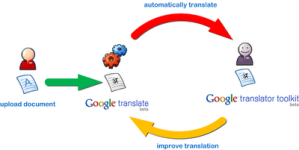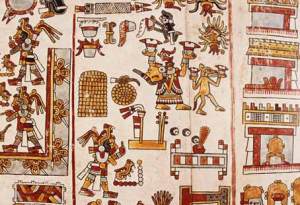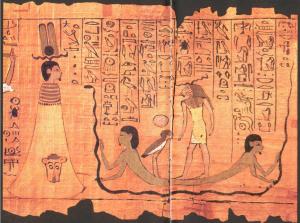“Machine translation, sometimes referred to by the abbreviation MT, also called computer-aided translation, machine-aided human translation MAHT and interactive translation, is a sub-field of computational linguistics that investigates the use of computer software to translate text or speech from one natural language to another.”
The aim of the Mt is to perform simple substitutions of words in one natural language for words in another. But only that is not possible for a good translation of a text. The reason is that the recognition of whole phrases and their closest counterparts in the target language is needed. To solve this problem nowadays corpus and statistical techniques is starting to be used, with this translation will improve.
Current machine translation software often allows for customisation by domain or profession (such as weather reports), improving output by limiting the scope of allowable substitutions. This technique is particularly effective in domains where formal or formulaic language is used. It follows that machine translation of government and legal documents more readily produces usable output than conversation or less standardised text.
Improved output quality can also be achieved by human intervention: for example, some systems are able to translate more accurately if the user has unambiguously identified which words in the text are names. With the assistance of these techniques, MT has proven useful as a tool to assist human translators and, in a very limited number of cases, can even produce output that can be used as is (e.g., weather reports).
The progress and potential of machine translation has been debated much through its history. Since the 1950s, a number of scholars have questioned the possibility of achieving fully automatic machine translation of high quality.[1] Some critics claim that there are in-principle obstacles to automatizing the translation process.
We have been using the google trasnlator for the translation class, and that is why I decided to write this post on it:
Google says about their blog that:
At Google, we consider translation a key part of making information universally accessible to everyone around the world. While we think Google translate, our automatic translation system, is pretty neat, sometimes machine translation could use a human touch. Yesterday, we launched Google Translator Toolkit, a powerful but easy-to-use editor that enables translators to bring that human touch to machine translation.
For example, if an Arabic-speaking reader wants to translate a Wikipedia™ article into Arabic, she loads the article into Translator Toolkit, corrects the automatic translation, and clicks publish. By using Translator Toolkit’s bag of tools — translation search, bilingual dictionaries, and ratings, she translates and publishes the article faster and better into Arabic. The Translator Toolkit is integrated with Wikipedia, making it easy to publish translated articles. Best of all, our automatic translation system “learns” from her corrections, creating a virtuous cycle that can help translate content into 47 languages, or over 98% of the world’s Internet population.
Taking that class on translation, one realises that it is one of the best machine translator (at least for English) but of course a knowleadge on the language you are working is needed. But why? Well, Altough it gives a general idea of the translation itself it is necessary to correct the text because the tranaltor is not able to recognize the subejct and sometimes it even confuses some terms. So if you have an idea of the language it is easy to correct them, but if not, if you are not able to see the mistakes the text is quite a disaster. Apart from that I have to say that using the translator is a firt step to end up with a profesional translator. It gives you the general idea, and from that it is possible to improve it.
Resources:
- The official Google Blog. Retrieved 20:05 15th April, 2011 From: http://googleblog.blogspot.com/2009/06/translating-worlds-information-with.html
- Wikipedia. The Free Ecyclopedia. 19:35 15th April, 2011 From: http://en.wikipedia.org/wiki/Machine_translation
- Springer. Retrieved 19:15 15th April, 2011 From: http://www.springer.com/computer/ai/journal/10590









